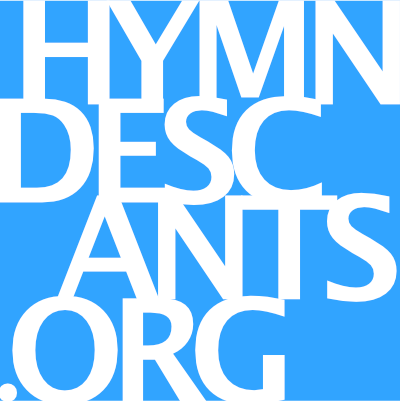Descant to the hymn tune EASTER HYMN. Free score with harmonized descant.choir part, and ad lib prologue. In this audio: Prologue, hymnal verse, and harmonized descant. Score with parts and passagework for brass quintent, timpani and organ also available. Free score.
1 hymnal
Jesus Christ is risen today, Alleluia!
our triumphant holy day, Alleluia!
who did once, upon the cross, Alleluia!
suffer to redeem our loss, Alleluia!
4. descant
Sing we to our God above, Alleluia!
praise eternal as his love, Alleluia!
praise him, all ye heavenly host, Alleluia!
Father, Son, and Holy Ghost, Alleluia!
The tune EASTER HYMN was first published in the 1708 volume, Lyra Davidica, with the title The Resurrection. The composer is unknown. The older of the two English texts commonly sung to this tune, 'Jesus Christ is risen today,' is based on a 14th C. Latin hymn found in a manuscript from Munich, Surrexit Christus hodie, the English translation hewing closely to the original. A later manuscript from Breslau includes a verse - Mulieres o tremulae - alluding to the first witnesses, the women who came to the tomb:
Haste ye women from your fright
take to Galiliee your flight.
To the sad disciples say
Jesus Christ is risen today.
Unlike the staid metrical psalm settings predominating English hymnody, EASTER HYMN incorporates more variety, with melismatic Alleluias assigned to the congregation. The tune is English in origin, appearing first in tune-and-bass score only, which would not be unusual in the figured bass era, and later as a faburden (tune in the tenor). It was immediately popular, and other musical adaptations were common until it took its final form in Hymns Ancient & Modern (1861). The first English translation appeared together with the tune, and underwent several modifications, concluding with the additon of a doxology in 1882. Charles Wesley wrote the the text 'Christ the Lord is risen today' in 1739 in A Collection of Tunes, Set to Music, As They Are Commonly Sung at the Foundery, an abandoned facility that was the home of London's first Wesleyan congregation, the prosody more consonant with the pietistic sensibilities of the time, less didactic than its ancient forbear.
[Instrumental version for brass quintet and timpani, with prologue and bridge available.]
Credits / sources
Glory to God: A Companion, Carl P. Daw Jr. (Louisville, Kentucky : Westminster John Knox Press, 2016)
Lyra Davidica (1708), Archive.org, p.11
An Annotated History of Hymns, J.R. Watson, ed. (Oxford University Press, 2002)
Updated: Oct 2022 - corrected a single parallel that resulted in a lot of notes moving around.
For Jesus Christ is risen today (Lyra Davidica, 1708)
For Christ the Lord is risen today (Charles Wesley 1739)
Descant verse (Jesus Christ is risen today):
Sing we to the Lord above
praise eternal as his love;
praise him, all ye heavenly host, Alleluia!
Father, Son, and Holy Ghost, Alleluia!
– st. 4 Charles Wesley (1707-1788)

